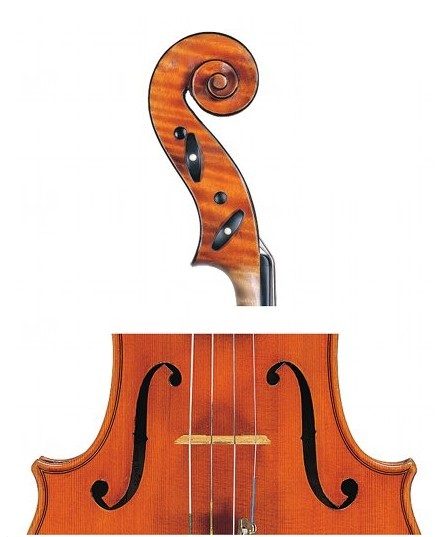Liutai Italiani del Novecento nelle collezioni del Museo del Violino

The working life of Giuseppe Fiorini spanned from 1870 to 1934 – a 64-year long carrier, from his apprenticeship with his father Raffaele (the first instrument made entirely by him dates back to 1876) to the years of his illness when he made progressively fewer instruments that were not always the product of his own work only (1925-1934). Until about 1881, his work was marked by the strong influence of his father and by the use of the external mould, a construction method imported from France. In his youth, Giuseppe often made antiqued copies of the classical instruments that were much in vogue at the time but, from his Munich period onwards, he progressively referred to the classical Stradivari style, using mainly the internal form and willow rib linings, and also refusing the practice of making antiqued instruments, as he would later explain.
Although he deeply admired Paganini and considered him as the best violin virtuoso ever, he was never particularly attracted to the models of Guarneri del Gesù, as he had an innate love for precision and neat, harmonious proportions. The 1920s are considered as his golden age (Zurich and Rome), a time when his instruments revealed the fascination he felt for the original Stradivari moulds, particularly the P form, though some of the instruments he had made in the late 19th century are no less fine than those of his full maturity.
The constant choice of materials of an extraordinary quality and the application of a strict quality control method resulted in real masterpieces whose value has been confirmed with the passing of time. However, the influence of Stradivari did not prevent him to express his own original style which clearly emerges in every detail of his free interpretations of classical instruments showing a proud consciousness of his Bolognese origins.
(written by Roberto Regazzi)
